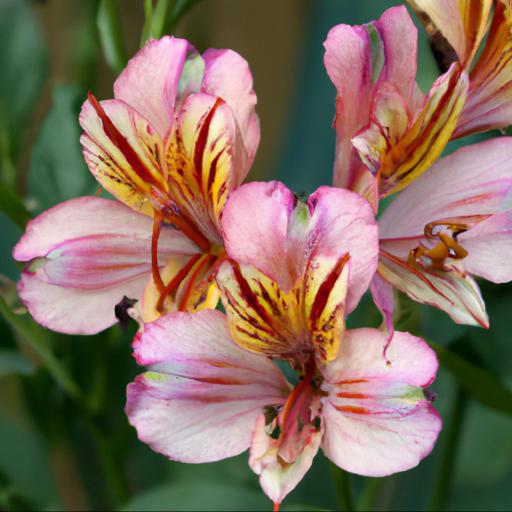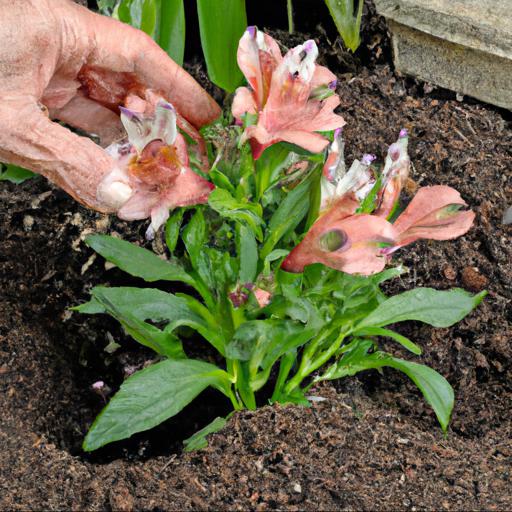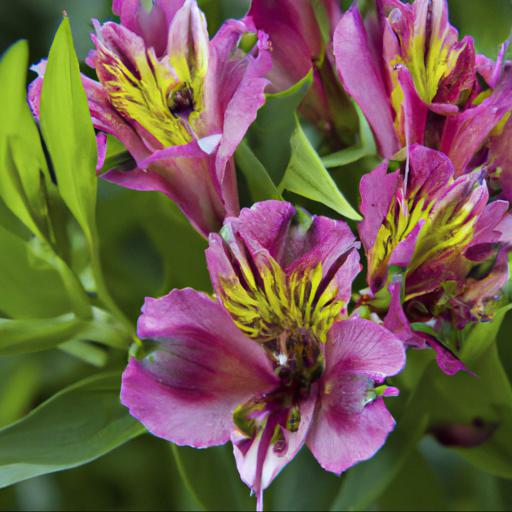Alstroemeria neptune is a stunning flower that can add a touch of elegance to any garden or bouquet. It is a member of the Alstroemeriaceae family, and is native to South America.
The flowers are large, with petals that range in color from deep purple to white and pink. Alstroemeria neptune is easy to grow and requires minimal maintenance. It is drought tolerant and can survive in a variety of climates.
It is also known for its long-lasting blooms, making it a great choice for gardeners and florists alike. With its beautiful petals and hardy nature, Alstroemeria neptune is an excellent addition to any garden or bouquet.
Benefits of growing alstroemeria neptune

Alstroemeria neptune is an eye-catching, versatile perennial flower that makes a great addition to any garden. This plant is easy to care for and produces beautiful, large, brightly colored flowers from late spring through the summer months. While it can make an impressive statement in a landscape, there are many benefits of growing Alstroemeria Neptune, as it is known to help pollinators and other beneficial insects, requires minimal care and is also long-lasting in perennial gardens.
One of the advantages of planting Alstroemeria Neptune is that it attracts essential pollinators such as bees and butterflies. The flowers have a large, flat surface area and produce a nectar that is highly attractive to these essential beneficial insects.
When planted in combinations of other flowering plants, Alstroemeria Neptune can help increase the number of pollinators and other beneficial insects in the garden. Another great benefit of this perennial flower is its low maintenance requirements. It is relatively easy to care for and does not require a lot of attention.
The plants are drought tolerant, so they can survive periods of light rains, but they require regular watering for full blooms. Alstroemeria Neptune also does not require regular trimming or treatments to stay healthy and vigorous.
In addition to its low-maintenance needs, Alstroemeria Neptune provides a long-lasting display of beautiful flowers that are both fragrant and attractive. Depending on the variety and the climate, it can bloom for months and even up to a year.
This makes Alstroemeria Neptune an ideal plant for perennial gardens and landscapes, where it will provide a cheerful display of blooms time and time again. For anyone looking for a reliable choice of flowering plant, Alstroemeria Neptune is an excellent and hassle-free choice. It is easy to care for and requires minimal attention, while providing vibrant and fragrant blooms that attract pollinators, beneficial insects and hummingbirds to the garden.
Additionally, this perennial flower is long-lasting, making it a wonderful addition to any landscape or garden.
Tips for planting and caring for alstroemeria neptune

Alstroemeria Neptune, also known as “Peruvian Lilies,” is a stunning, long-lasting flower, perfect for gardens and bouquets alike. Not only does it boast beautiful blooms in a variety of colours, but it is also incredibly easy to care for, making it a great choice for a novice gardener. To ensure that your Alstroemeria Neptune gets a healthy start, following a few tips for planting and caring for it can go a long way.
When starting with your Alstroemeria Neptune, the best place to plant it is in a sunny spot with well-drained soil. This will give your flowers plenty of room to grow and blossom.
Some experts also recommend adding an extra layer of mulch to retain moisture and keep your plants healthy. Additionally, it’s important to keep the soil acidic so your flowers can thrive; if you need to, you can add some compost or lime to make sure the soil is suitable. Once your Alstroemeria Neptune is in the ground and ready to go, it is essential to keep an eye out for weeds and pests.
Weeds compete with your plants for water and nutrients, so it’s a good idea to keep your area weed free. Applying a layer of mulch on top of the soil can also help in this regard.
Additionally, some pests, such as aphids, can cause harm to your flowers. Taking some preventative measures to make sure you keep an eye out for any early signs of an infestation and take steps to solve it quickly is the best way to care for your plants. All in all, Alstroemeria Neptune is a fabulous choice for any gardener, especially those who are just starting out.
Not only does it boast stunning blooms, but it is also really simple to care for. By ensuring that your plants get a good start with the right soil and environment and taking preventative steps to ward off pests, you can enjoy your lovely Peruvian Lilies for many years to come.
Common problems with alstroemeria neptune

Alstroemeria Neptune: Common Problems for UK GardenersAlstroemeria Neptune is a beautiful flowering perennial, known as the ‘Peruvian Lily’. It is known for its long-lasting blooms, making it one of the most sought-after plants by UK gardeners.
However, this beloved plant also has its share of problems. In this blog, we will discuss some of the common problems associated with the Alstroemeria Neptune and how they can be managed. One of the most common problems that UK gardeners face when growing the Alstroemeria Neptune is poor drainage.
It is susceptible to root-rot if planted in soil that does not have proper drainage. Gardeners can prevent this problem by adding organic matter to the soil to help improve drainage. Compost or leaf mold is a great option for improving soil drainage.
In addition to poor drainage, a lack of sunlight can also be a problem for this plant. Alstroemeria Neptune prefers full sun.
Without it, the plant will struggle to remain healthy and will not produce abundant blooms. Planting the Alstroemeria Neptune in a spot that gets at least six hours of sunlight per day will help ensure its success.
Additionally, providing the plant with extra nutrients and water during dry times can also help it stay healthy. The Alstroemeria Neptune is also susceptible to fungal disease. These diseases can cause the leaves and stems to develop black spots and the tips of the leaves may yellow and eventually die.
If caught early, most fungal diseases can be managed with fungicide sprays applied regularly. It is also important to keep the plant well-watered during dry periods to help prevent diseases from occurring in the first place. In conclusion, the Alstroemeria Neptune can be a wonderful addition to any UK garden, providing beautiful blooms for several months. With proper care and maintenance, UK gardeners can enjoy this perennial for many years. However, it is important to remember its sensitivity to poor drainage, lack of sunlight and fungal diseases. With the right care, UK gardeners can ensure the health and beauty of their Alstroemeria Neptune plants.
Our video recommendation
Final Touch
Alstroemeria Neptune is a stunning flower with striking deep purple petals and golden yellow centers. It is a great choice for adding a unique and beautiful touch to any garden or bouquet. This flower is easy to care for and is sure to bring joy and beauty to any garden or bouquet.
Its unique colors and beauty make it a great choice for any occasion.
FAQ
What is the scientific name of Alstroemeria Neptune?
The scientific name of Alstroemeria Neptune is Alstroemeria hybrid.
What are the characteristics of Alstroemeria Neptune?
Alstroemeria Neptune is a hybrid variety of Alstroemeria that is characterized by its large, bright blooms in shades of pink, purple, and white. It has a long flowering period, typically lasting from late spring to early autumn. It is a low-maintenance plant that is resistant to pests and disease and is easy to propagate. It is also tolerant of a wide range of soil types and climates.
How does Alstroemeria Neptune differ from other Alstroemeria varieties?
Alstroemeria Neptune differs from other Alstroemeria varieties in that it has larger, more vibrant blooms and a longer flowering period. It also has a higher tolerance for cold temperatures and is more resistant to pests and diseases.
What is the ideal climate for growing Alstroemeria Neptune?
The ideal climate for growing Alstroemeria Neptune is a warm, sunny climate with well-draining soil and moderate humidity.
How often should Alstroemeria Neptune be watered?
Alstroemeria Neptune should be watered once or twice a week, depending on the soil moisture and temperature.
What is the best way to propagate Alstroemeria Neptune?
The best way to propagate Alstroemeria Neptune is by division. Division involves carefully digging up the plant, separating the clumps, and replanting them in new locations.

